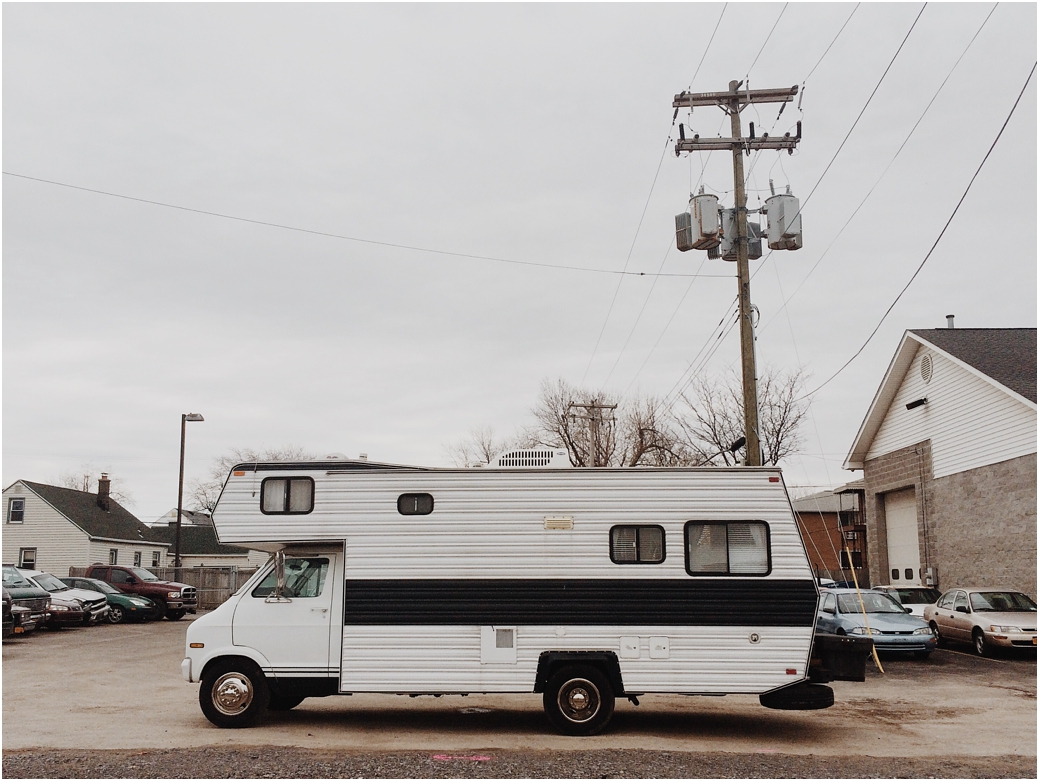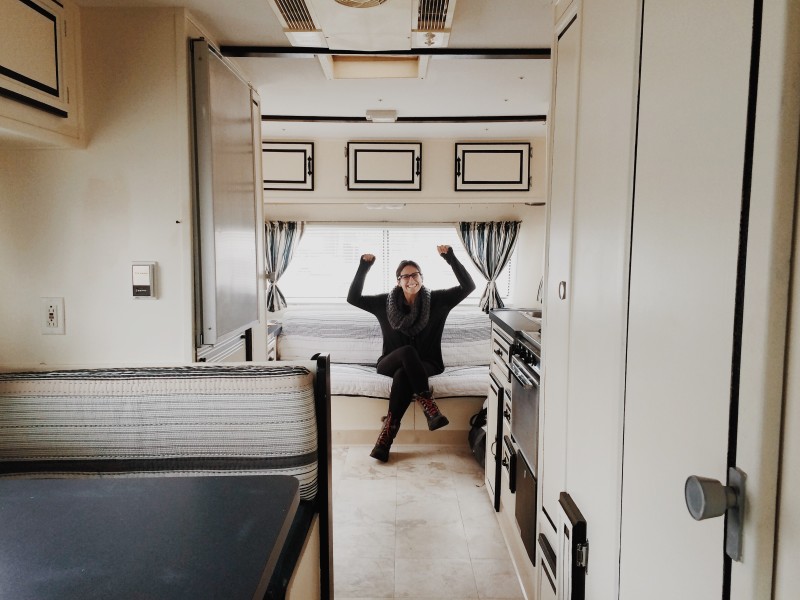So you’ve decided to look for a motorhome/RV/camper/thing to sleep in on the road! How exciting! Are you looking for any helpful tips or tricks (i.e, where to buy, what to look for, etc)? We’re first time motorhome owners and when we first started searching we didn’t know where to begin. We thought we’d share some of our experience here of how we began our search and we will continue to blog as we grow through the process of being owners.

First! How awesome that you have decided to begin the search for a motorhome! We’re pretty sure that’s what it’s called, at least, thats what we’re calling her. We purchased one to tour in as a wandering photography circus. Sort of kidding, but sort of not. We had this wild dream of being on the road, photographing smaller weddings & elopements, visiting different cities and photographing more naturalistic, outdoor portrait sessions. Something sparked in us recently-We could make our dream a reality. OR at least for a little while.
Once we decided we WERE going to do this, we weren’t sure where to start but we convinced ourselves that if we had the actual vehicle in hand, things would start to piece together for our trip. And it’s true, since purchasing her in February, so much has come together for our upcoming trip. We now have a leave date & our first three weddings booked on the road to begin the journey.
Here are the questions that helped us narrow our search, along with our personalized answers.
Q) What is the purpose of your motorhome purchase?
A) We wanted an easy to maneuver apartment on wheels that could help us live out our dream of being a traveling photography circus.
Q) What type of vehicle would work best for you?
A) We decided we needed something smaller (under 25 feet) because we’re so new to this and we weren’t sure if we’d be able to drive anything bigger. We also decided that we needed toilet. Christina uses the restroom a lot in the middle of the night and nothing would be worse than her getting eaten by a bear in the middle of the night. OR.. being in a Walmart parking lot and having to pee at 2am.
Q) What is your budget? And if you don’t have one, set one. This will help the search process become refined.
A) There is such a range out there of new and old and we found that having a budget helped narrow the options. We set our max budget at $12,500 (total with repairs) so we searched the $2,000-$8000 range.
We found one for $2,000 that included free mice traps and we quickly decided against it (it also was 30 ft long, which viewing it helped us realize just how big that is. From there, we set our maximum length to under 25 ft which helped cut this particular camper out… not that the mice traps had anything to do with deterring us at all).We ended up finding something for $5500, but it needed a little work (which we were aware upon purchase), so we’re already getting close to $7350 after the repairs it needed. It doesn’t need much more than what we did to it, but there are a few things on the aesthetic end we may change (Christina votes for new toilet!).
Q) What class/type of motorhome do you want? Class A, B, or C?
OR
do you want a tow behind trailer?
That’s an option if you have a truck that can tow the weight. Also, there are lightweight trailers such as Scamps that can be towed behind a smaller SUV Want to learn more about all the different types? Check wikipedia’s page here!
A) We don’t own a truck so we were limited on our options. It was either a lightweight scamp (that maxed our budget), or a home on wheels. We went for the home on wheels. Once we set our price, the classes sort of worked themselves out because we wanted a bathroom and place to work.
After deciding all of this, we searched a lot of forums and finally found ours on Craigslist. We wanted something local so we could see it before purchasing. We tried searching other cities and states but it started to feel super complicated to buy something without seeing or having to travel and view it and not know if it would work in the long run…
Before purchasing the motorhome we found, we were considering a Toyota Travelmaster. Our friends Max & Sophie recently toured the country in one so we asked them for some help in deciding. Here are the tips they sent us (specific to the Toyota Travelmaster model, but still helpful):
- Transmission fluid – the transmission goes on all of these at some point. the best way to tell if it’s on it’s way out is to check the fluid – it should be red and a little watery looking – if it looks dark at all or smells burnt, that means the transmission is burning up. Doesn’t necessarily mean it’s bad, but I’d take it to a transmission mechanic before buying it.
- Make sure the appliances work, especially the fridge (the fridge has to be totally level to run properly and a lot of people don’t do this and their fridge dies and it’s one of the most expensive things to replace)
- Check for leaks – take a flashlight to every dark place and look for water damage (ours had a lot of water damage when we got it, which is why it was so cheap. I spent many days sealing everything and we still eventually had water leaking in again, which wasn’t a big deal for our tour but we would’ve eventually had to gut and rebuild it if we wanted to keep it.)
- Does it have a generator? If you’re going anywhere cold, the heater works off propane but in order to run it you’ve got to be able to power the heater fan, which takes up a lot of energy and we could never get our batteries to do it on their own. It’s a pretty small space so this just meant we had a few cold nights and that we kept the engine running for extended periods to keep it warm, but a generator would’ve made things easier.
- Propane tank – Toyota tried out a fancy modern connector in 1986 that nobody else ended up using, so filling our propane tank was always really difficult and no one knew how to do it. I would just ask the owners about their experience filling the tank and make sure the connector and tank don’t look too rusty or messed with.
- Fresh water, grey water and black water tanks – are there any leaks? do the gauges work?
- Spare tire? some people choose not to travel with one since it adds weight and only works for the front tires – something to check on.
- Does it ride low to the ground? Make sure the shocks are still good and ask if they’ve had any problems with them.
- Go up on the roof and walk around – are there any soft / unlevel spots? look really closely at the roof rubber and caulking to see if there are little holes or tears.
- Does it have cabin A/C, which is probably not a big deal – ours had it and we almost never used it because you need to be plugged in to get enough energy for it.
- Then the other obvious stuff like check for rust and engine leaks, make sure it shifts smoothly and that it goes to every gear (it should have 3 gears + overdrive for when you’re going 50+), make sure engine temp gauge works, make sure the cruise control works, check engine battery and coach battery, etc.










